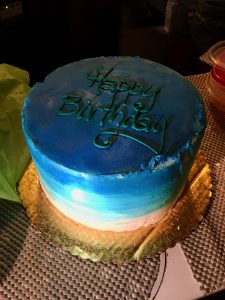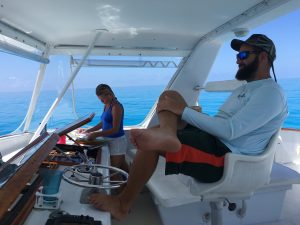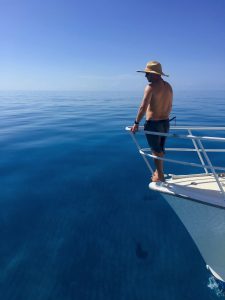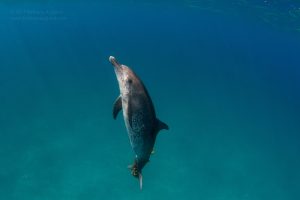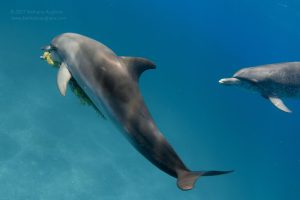Last trip of 2017
Where did the summer go? The field season always seems to fly by, and this summer was no different. Our last trip went well, with great weather and several spotted dolphin encounters. All week long, we celebrated the birthday of our founder and research director, Denise Herzing (her actual birthday was the last day of our trip).
We spent the first few days of the trip off Grand Bahama Island, searching for the elusive southern cluster, also called the “South Pod.” The southern cluster is comprised of about 45 animals, which includes individuals like Venus, Violet, Summer and Naia and their calves. Google, Island, Helix and Crick are the only old males left. We’ve only seen animals from that cluster twice this summer, and not all of them. We also wanted to see the remaining four northern cluster animals (those who did not move to Bimini in 2013). Of those four, we only saw Tristan and she was with the southern cluster. Where are they?
After a few days of searching, we traveled down to Bimini to look for the rest of our study population. On the way south, which includes crossing the deep-water Providence Channel, we had a young brown booby bird (Sula leucogaster) circling around our boat. It tried to land a few times, but couldn’t get a grip on the rail. It’s always exciting to have interesting wildlife sightings! And of course, I grabbed my camera to take some shots.
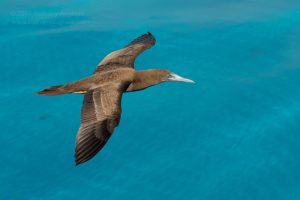
We saw a brown booby bird while crossing the deep Providence Channel between Grand Bahama and Bimini
During one encounter in Bimini, an adult female, Nebula, was with 8 juveniles and seemed to be playing babysitter. This rowdy gang of juveniles has been spotted together all summer: Monkey, Trident, Jammin, Mola, Hepta, Lettice, and Nova. The juveniles were doing lots of play fighting, and looked like they were targeting Mola. Nebula was also disciplining some of them, likely to keep them under control.
Many of the animals seemed to be traveling during this trip. When the dolphins are traveling, it’s hard for us to keep up in the water to record their behavior. So, in that case our goal is to get photo-identification shots so we can record the group size and composition. We can still analyze social structure with that kind of data.
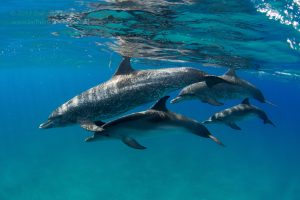
Potion and Duchess travel with their two calves. Many of the dolphins were traveling in late August.
One day while surveying, we came upon several huge mats of sargassum, a brown seaweed, at least 100 by 100 feet. We decided to take a snorkel break to see what we could find. These mats are often home to baby sea turtles, fish and sea slugs. And sometimes, larger predatory fish like mahi mahi hang out underneath the mats looking for food. I saw some trash and jellyfish.
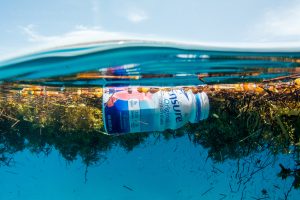
We took a break to snorkel on a large seaweed mat one day. We hoped to find lots of fish or baby sea turtles, instead we found jellyfish and trash.
To sum up our year, we had 53 total encounters with spotted dolphins. We had 12 new pregnant females and 9 new calves. A few of those calves, however, might have been from the 2016 field season, so we will work on confirming that this winter with photos and video.
In total, we identified 94 of 182 animals. That number is low. There are a lot explanations why this could be, which is why we will continue to go back year and year, to learn more about long-term patterns in social structure, ecology and how environmental disturbances impact marine mammal populations.
The entire trip we were monitoring Hurricane Irma, realizing it was turning into a monster storm that looked like it would impact Florida — and indeed it did. We arrived home Monday night, which gave us time to prep our homes, the office and the research boat, Stenella.
Now, it’s time to analyze the data! Stay tuned for more posts.
What environmental disturbance altered interspecies association and behavior patterns? Find out here. Ready to read more? Find other scientific publications here.

